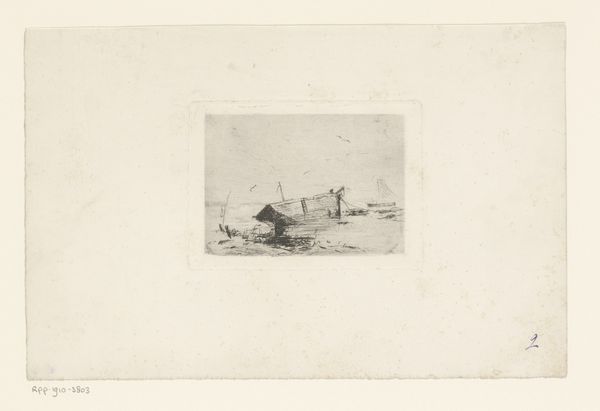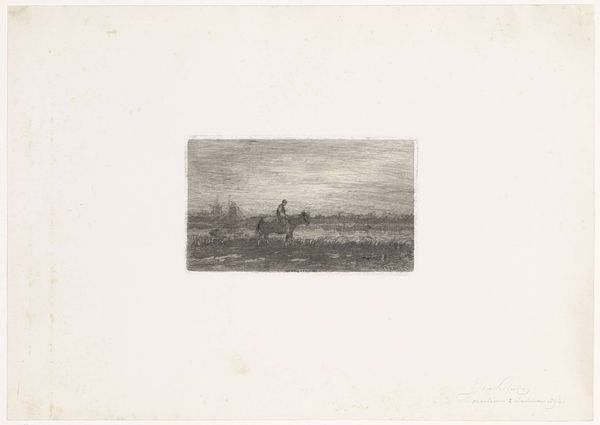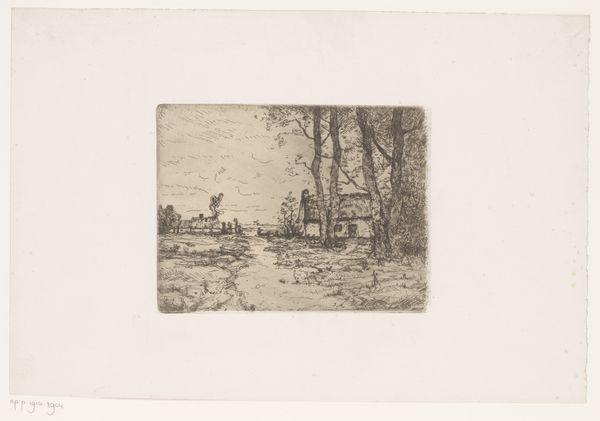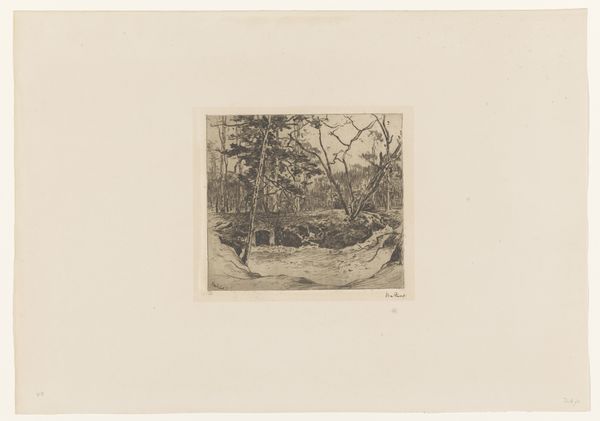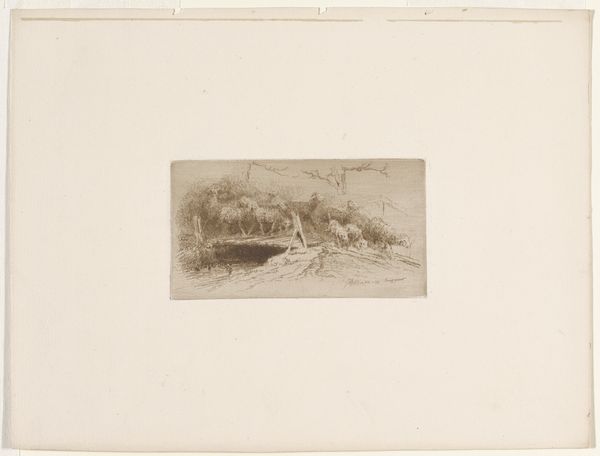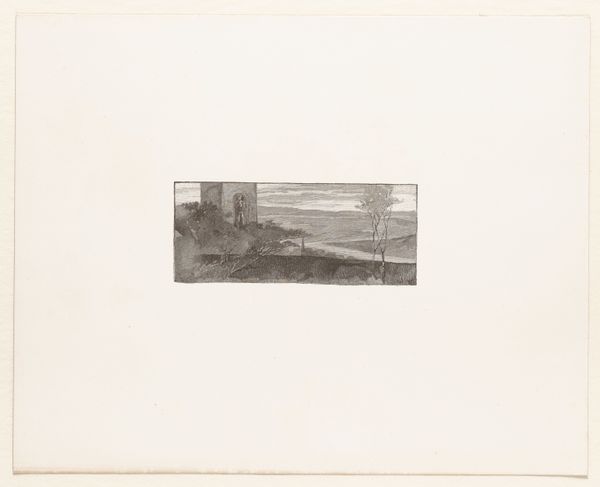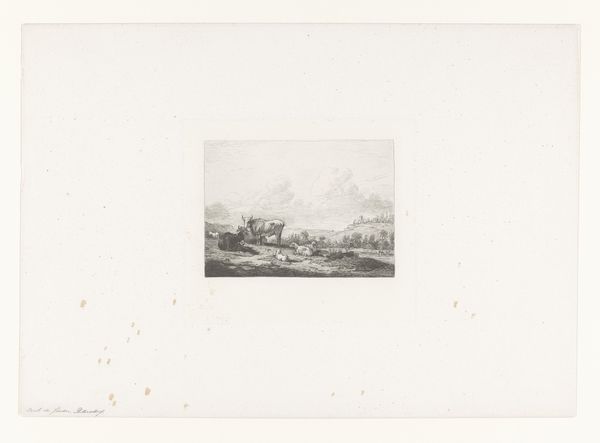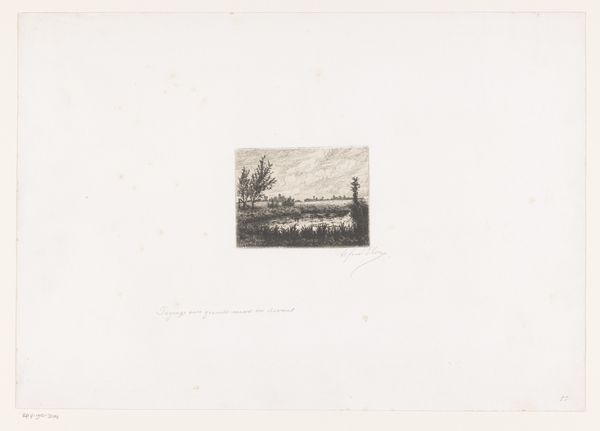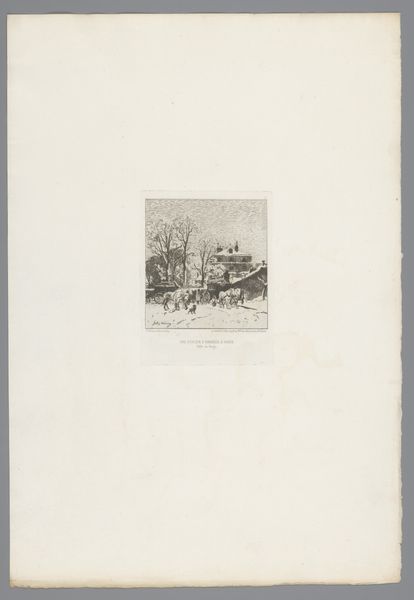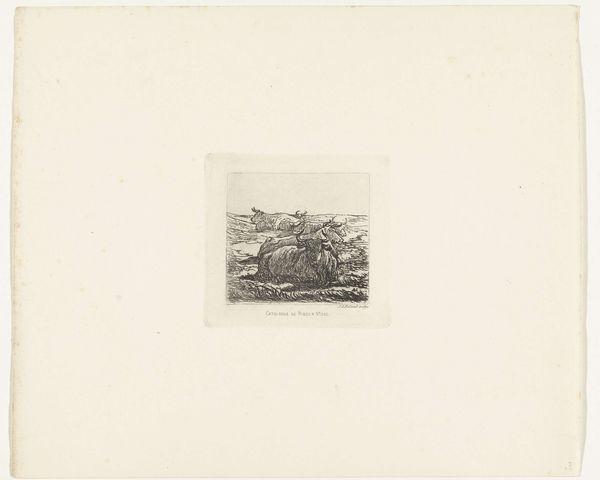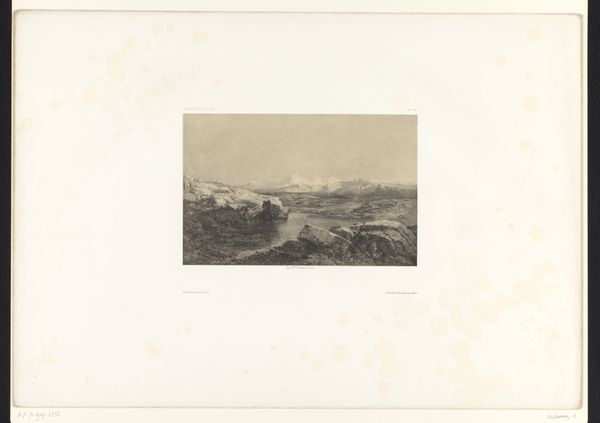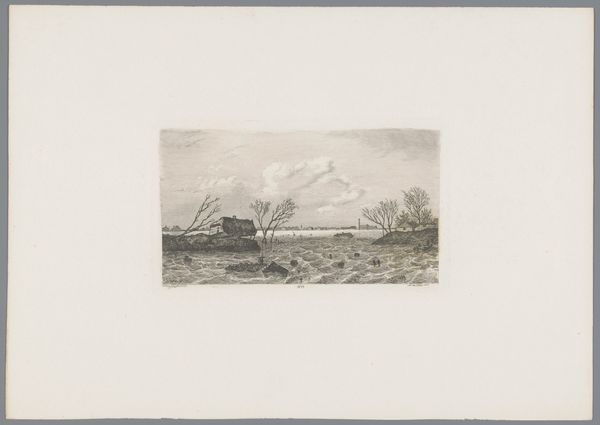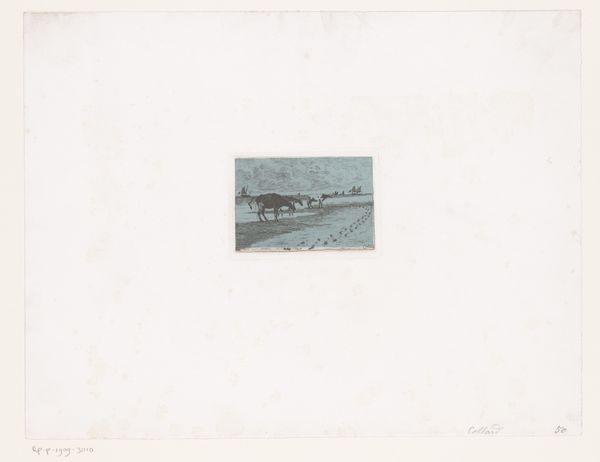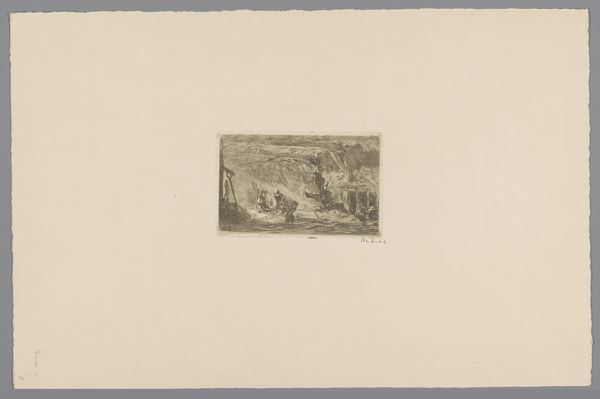
Dimensions: 3 3/4 x 3 15/16 in. (9.53 x 10 cm) (plate)9 7/8 x 11 3/8 in. (25.08 x 28.89 cm) (sheet)
Copyright: No Copyright - United States
Curator: Today, we're looking at "The Little Bridge," an etching by Gustav Goetsch from 1910, currently residing at the Minneapolis Institute of Art. It's a rather diminutive print, isn’t it? Editor: It is small, yet instantly evocative. There's a stillness, almost melancholy, conveyed through the muted tones and blurred lines. The bridge itself feels like a symbolic passage between one state and another, doesn't it? A connection implied but not fully realized. Curator: I am especially drawn to the technique itself. Notice the density of the etching lines in the foreground where the boats are gathered, contrasted with the lighter, almost ephemeral quality of the bridge and sky. Goetsch's control of the etching process clearly defines depth. We must consider his workshop practice. How did his labour shape this image? Editor: Certainly, the labour is key. But I wonder if the boats are deliberately obscuring the view? It feels like there's a subtle tension between the promise of connection and the reality of human obstruction. A theme seen in many urban landscapes. The bridge becomes more than just infrastructure, it's an idea hampered by the grit of daily life. Curator: Or maybe the grit *is* the subject. Perhaps Goetsch is commenting on the changing face of industry, or the port environment. Are these simply the byproducts of urban development? His choice of etching—a medium perfectly suited to capture detail, also provides a unique way of depicting it. I am fascinated by this specific approach. Editor: The more I observe, the more I interpret those clustered boats and docks as symbols of industry weighing upon what otherwise might have been simple bridge representing hope. This piece subtly communicates societal commentary, perhaps regarding the Industrial Revolution. It’s a narrative densely packed in such a small space! Curator: Absolutely. The scale seems directly related to what may have been available or cheap at the time; the work’s accessibility being potentially dependent on such constraints in production. A simple piece which now inspires much to think about. Editor: Indeed. It's interesting how such an unassuming image, loaded with symbolism, resonates with such historical meaning and implications about industry and societal progress. A testament to how much power art can possess, even in small doses.
